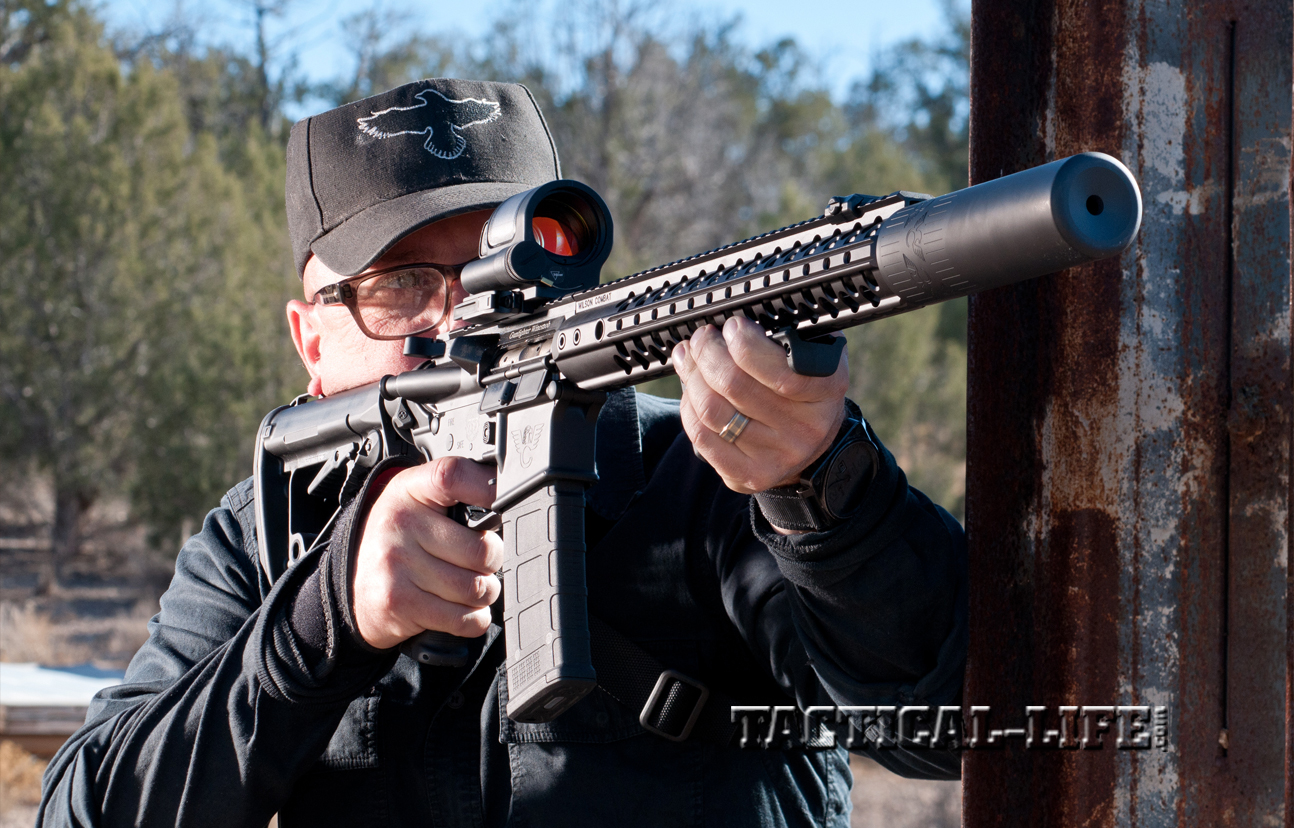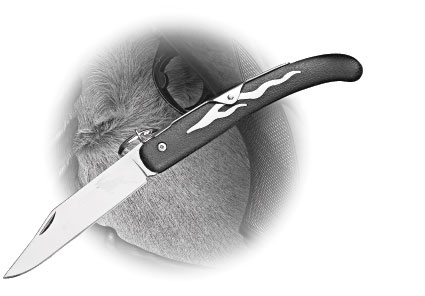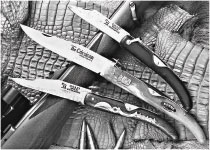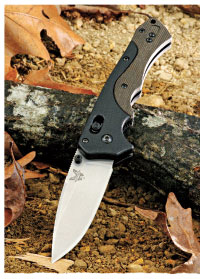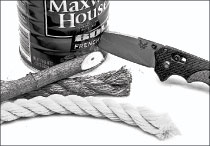In an age when the celebrity spotlight pardons increasingly higher levels of absurdity and self-absorption, Maynard James Keenan, the multiple Grammy-Award-winning frontman of Tool, A Perfect Circle and Puscifer, stands in stark contrast. Behind the driving music and unconventional stage presence is a man of focused intelligence and a sometimes-perverse sense of humor, who bats fame and pop-culture about like a cat with a mouse.
While his more loosely tethered contemporaries burned out and broke up, Keenan cultivated a balance of back-sore, trial-and-error grape farming with an evolving musical creativity. His philosophy of living purposefully brought him in 1995 to northern Arizona to escape the madness that was Los Angeles and to, in his own words, build a bunker. Shortly after his arrival, Keenan pioneered in the rocky sediment of a region better known for spiritual vortexes and copper mines, the art of wine grape growing. The result has been a series of platinum albums, a hat trick of successful bands and a winemaking business that sells nearly 50,000 bottles per year, with some vintages selling for as much as $250 per bottle.
Meet Maynard
Advertisement — Continue Reading Below
Keenan, 48, grew up in Ohio and Michigan, where he ran cross-country and wrestled in high school. Upon graduating, he enlisted in the Army and initially trained to be a surveyor preparing sites for artillery emplacements. Shortly after basic training, Keenanâ’s performance on an aptitude test led to an offer to attend the U.S. Military Academy Prepatory School. After one year, Keenan was offered an appointment to West Point, which he declined, whereupon the Army sent him to Fort Hood to think about my decision for the remainder of his enlistment. His duty to country served, Keenan got off the bus in his Class A greens and with his Army duffle in hand and instructed his hometown JC Penny barber to give him a mohawk. And with that, the die was cast. Keenan used his GI Bill to attend Kendall College of Art and Design. The rest is rock music history.
Self-Reliant Soul
So how and, more importantly, why does a rock star at the top of his game mold a large part of his life around winemaking? The process started in the mid-90s, says Keenan. Winemaking is part of my survival mindset. I think too many people have lost the ability to find food and water, but I don’t think living off the grid is truly practicable. Pardon the pun, but there is truth in it ”it takes a village to sustain a village. There are rural communities around the world that are able to support themselves when they are focused around a single sustainable industry (wine, olive oil, wool, etc). Each person or family plays a role and sustains an element of the whole. Each contributes and trades his specialty with others. As a result, the diversely supplied community thrives.
Advertisement — Continue Reading Below
This isn’t a Utopian concept, Keenan said. On the contrary, each group perfects its respective element and trades upon its relative value. My contribution is wine. One of the first things Noah did after the flood was plant grapes. The grapes provided food, and the fermentation gave the people a naturally purified water source. In our modern application, it serves much of the same purpose. Here in northern Arizona, we now have dozens of vineyards, a winemaking incubator and a winemaking study program underway at our local community college.
Making Of A Marksman
Shooting rifles and handguns is another extension of Keenan’s sustainable-survival mindset. Though trained in marksmanship in the Army, his passion for firearms is a more recent development.
Advertisement — Continue Reading Below
“I was re-introduced to shooting by a close friend,†Keenan told me, and then I began to collect a few guns, but these days my focus is more on perfecting my skills. A gun is a wonderful tool in terms of the ability to provide food and safety. It’s a lethal tool, but it’s a tool. Like a hammer it can build a house or beat you to death.
Growing up, our guns put venison on the table in the winter, and we tended a backyard garden in the spring and summer. The gun, like the task of killing to provide food, requires respect and responsibility. I also appreciate guns as mechanical works of art. The ability to build and tune a device that can place a ballistic piece of metal on pie plate at 1,000 yards to me has its own beauty.
To Keenan, the practice of shooting also has its own significance. “I refuse to live in fear, nor be in a heightened sense of paranoia. I want to live with optimism and faith, but I also wear a seat belt. There are monsters and beauty in each of us; the solution is to bring out the best parts. We practice martial arts not because we are barbaric, but to perfect a skill that we might one day need. I consider shooting a martial art with a modern tool.
Advertisement — Continue Reading Below
Wilson Recon At Gunsite
Known worldwide for its superlative line of semi-custom production 1911 pistols, Wilson Combat (WC) has also turned its skilled gunsmiths on building a line of tactical and sporting AR-15s. Each is made from hand-matched, CNC-machined upper and lower receivers and fitted with a trigger group that reflects the decades of performance tuning experience at Wilson Combat. For Keenan, the team at Wilson Combat built a custom Recon SR Tactical carbine chambered in .300 Blackout and fitted with a titanium WC Whisper Suppressor. Dubbed the “Gunfighter Wine Snob,†Keenan’s Caduceus Cellars logo and initials were laser etched into the lower receiver above the safety by Wilson’s Custom Shop.
Built with an all-black mil-spec hard anodized Armor-Tuff finish, the Recon SR Tactical is a mid-length AR with a Wilson Combat 14.7-inch 1-in-8 twist stainless match-grade barrel, adjustable gas block and Tactical Trigger Unit (TTU). The suppressor is attached via a rapid-thread muzzle brake and marries tightly to the full-length 14-inch TRIM rail. The shooter interfaces are a Rogers/Wilson Super-Stoc and Ergo pistol grip. For this shoot, we added a Magpul battery assist device (BAD) lever, an angled fore grip, and an ASAP plate-attached MS3 sling. To top it off, we ran a Trijicon SRS red-dot reflex optic.
Advertisement — Continue Reading Below
To properly exercise this rifle, Maynard and I travelled to the Gunsite Academy north of Prescott, AZ. For nearly 40 years, the late Colonel Jeff Cooper’s facility has trained police, military and responsible gun owners in the art of gunfighting. Gunsite starts with fundamentals in a controlled environment, but moves the student into realistic indoor facilities and outdoor target trails that require safe movement with a weapon, clear thinking and solid decision making. For our sins, we were assigned to Charlie McNeese, who customized a two-day shooting package of instruction that included both carbine work and sidearm fundamentals. A combat-veteran of the U.S. Marine Corps and career law enforcement officer with the Arizona Department of public safety, McNeese is one of Gunsite’s senior instructors. He wasted no time putting us to work on the flat range testing both our reaction times as well as accuracy through multiple shots, multiple targets and varying distances. A gifted and experienced instructor, McNeese tuned our weak points very quickly. Confident on handguns, we moved into zeroing and working out our carbine fundamentals on the Recon SRs.
Working with a suppressed weapon is a pleasant change for those accustomed to the sound and shock of a standard carbine. Hearing protection is virtually unnecessary, especially with subsonic ammunition, and the general fatigue of shooting high-round-count exercises is eliminated.
We worked with 220-grain Wilson Combat, 208-grain Hornady and 220-grain PNW subsonic ammunition that produced noise signatures slightly louder than a hammer hitting a nail. Traveling at just over 1,000 fps, subsonic rounds are designed for close-quarters applications where the bullet size is maximized to offset the terminal-ballistic impact of the reduced velocity. While a pleasure for riflemen to shoot, the tradeoff of subsonic rounds is range. By comparison, the 125- and 155-grain PNW supersonic rounds slammed the steel with authority, but produced a noticeably louder report. It is incumbent upon the shooter to understand the benefits and trade-offs of both options.
Advertisement — Continue Reading Below
Throughout the drills, the Whisper Suppressor, with its largely titanium construction, functioned as a precise extension of the weapons system, and not a nose-heavy accessory. Though built to mil-spec standards and dimensions, the Recon SR handles uniquely. Out of the box, there is no break-in period of bed spring scratching and action clatter that often accompanies a fresh rifle. True to the company’s roots, Wilson Combat Recon SR arrives as a smoothly functioning package with a tightly tuned single-stage trigger.
For Keenan, training with McNeese at Gunsite and running the Recon SR was an integrated experience. “I cannot justify owning a specifically built tool like this without an understanding of the impact of its capabilities. At Gunsite, you get down on the ground, in the dirt, to train. It’s a realistic exercise in understanding the benefits of and awareness for the weapon’s flexibility. Just like in life, you become aware of your strengths and limitations; how you evolve and use the tools is a choice, and it determines what you become.
Editor’s note: For a look at a great interview video conducted on the above trip to Gunsite, visit www.tactical-life.com.
Advertisement — Continue Reading Below
